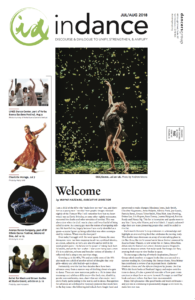 I am a child of the 60’s — the “make love not war” era, and therefore as a young man I recoiled from graphic images televised nightly of the Vietnam War. I still remember how fast my heart would race as David Brinkley, or some other nightly newscaster, recounted the deaths and other atrocities of combat. This was also a time when the draft was in place and I was fearful of being called to serve. As a young gay man the notion of navigating military life horrified me, largely because I was easily identified as a queer – a name I grew up being called that was often accompanied by violence. Where was the love part?
I am a child of the 60’s — the “make love not war” era, and therefore as a young man I recoiled from graphic images televised nightly of the Vietnam War. I still remember how fast my heart would race as David Brinkley, or some other nightly newscaster, recounted the deaths and other atrocities of combat. This was also a time when the draft was in place and I was fearful of being called to serve. As a young gay man the notion of navigating military life horrified me, largely because I was easily identified as a queer – a name I grew up being called that was often accompanied by violence. Where was the love part?
Even today I struggle with the word queer. I know, the once derogatory term has been reappropriated—as a political identity, as a noun, adjective, or verb, and also it’s used so well in the word gender-queer. I do believe in the power of taking back hurtful words, and yet the fact is when I hear queer being used—even if it is to celebrate, reframe and broaden notions of identity—I reflexively feel a ping to my past that stings.
Growing up in the 60’s, 70‘s and probably most of the 80’s also made me a child of another school of thought: that only girls—skinny and able bodied—get to dance.
Fortunately, over the last four decades there have been advances away from a narrow way of thinking about who gets to dance. There are now numerous paths to a life in dance that encourage and celebrate differences—like body size, disability, gender non-conformity, race, class—that are often major barriers to freely participating in the world, and in dance. Recognition for advances are attributed to visionary pioneers that reside here in the Bay Area—the following individuals have fought hard and persevered to make changes: Rhodessa Jones, Judy Smith, Claudine Naganuma, Anna Halprin, Alleluia Panis, Joe Goode, Patricia Berne, Amara Tabor-Smith, Nina Haft, Amy Dowling, Dohee Lee, Eric Kupers, Sean Dorsey, Joanna Haigood, Patricia Reedy and Nancy Ng. This list is incomplete and speaks more to any bias I have, who I know, and who I don’t. I happily acknowledge there are many pioneering people that could be added to this list.
Each month Dancers’ Group endeavors to acknowledge and highlight an ever-evolving field that celebrates the moving body. This double issue showcases an array of events taking place in the Bay Area, like the bi-annual aerial dance festival presented by Zaccho Dance Theatre. A new writer for In Dance, Mina Rios, delves into the festival and artistic director Joanna Haigood’s vision to showcase artists that make work that hangs and flies; creating fresh ways to view bodies in space.
To encourage a sharing of writerly inspirations, Dancers’ Group asked members to suggest books that you can add to a summer reading list. Continuing this literary theme, Sima Belmar has contributed a review of an important book: Katherine Dunham: Dance and the African Diaspora by Joanna Dee Das. While this book looks at Dunham’s legacy and major contributions to dance, it’s also a powerful reminder of how past events continue to shape how we move forward. I’m eager to read Das’ book and many others that have been recommended.
Enjoy life’s pleasures—like good books and warm embraces—and join me in continuing to passionately engage as we work to, make love not war.
This article appeared in the July/August 2018 edition of In Dance.


